Farmers and agricultural professionals rely on accurate crop data to make informed decisions about their crops. The Crops Record Form is a tool used to collect this data, and it helps farmers track planting dates, acreage planted, crop varieties, and other information. By keeping track of this information, farmers can better understand the performance of their crops and identify any potential problems. Additionally, the Crops Record Form can be helpful in preparing for future seasons.
| Question | Answer |
|---|---|
| Form Name | Crops Record Form |
| Form Length | 34 pages |
| Fillable? | No |
| Fillable fields | 0 |
| Avg. time to fill out | 8 min 30 sec |
| Other names | crops record book, crop recording software, crops record, sa global combinal crops |
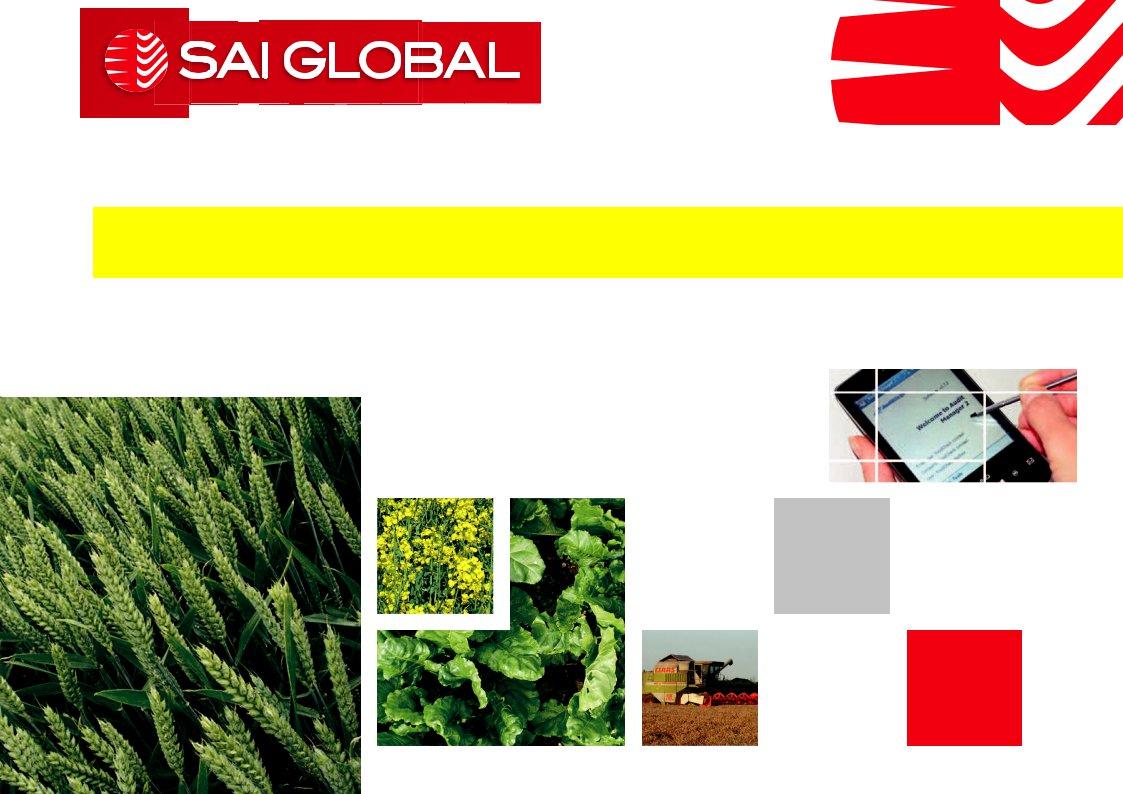
Combinable Crops Farm Record Book

Combinable Crops Record Book
Harvest 2009
SAI Global FABBL Assured Combinable Crops Scheme
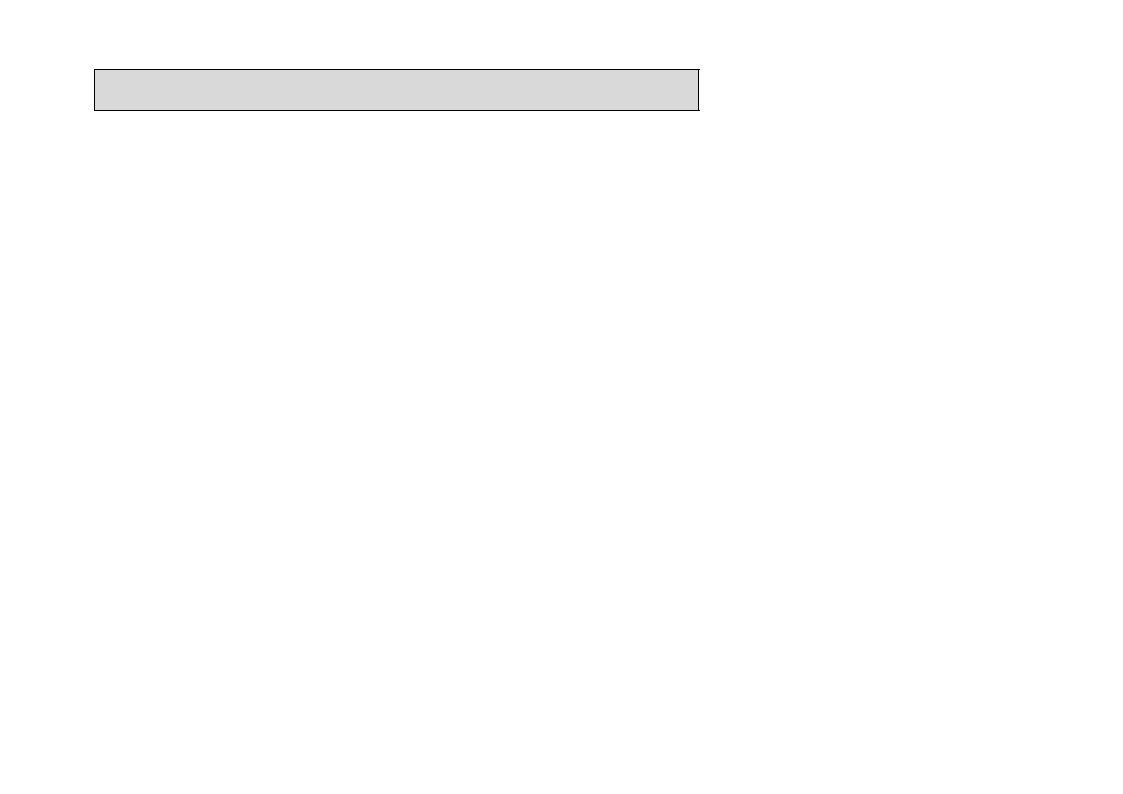
CONTENTS
Section 1 – General Records |
3 |
|
|
|
|
Section 2 – Grain Storage |
4 |
|
|
|
|
Section 3 – Chemical, Fertilizer and Granular Dust Application Equipment |
10 |
|
|
|
|
Section 4 – Grain Handling Equipment |
10 |
|
|
|
|
Section 5 – Moisture Meters/Temperature Probes |
10 |
|
|
|
|
Section 6 – Rodent Control |
11 |
|
|
|
|
Section 7 – Field Record |
12 |
|
|
|
|
Section 8 – Emergency Phone Numbers and Contingency Plan |
24 |
|
|
|
|
Section 9 – Pesticide Inventory |
25 |
|
|
|
|
Section 10 |
– Complaints Record |
27 |
|
|
|
Section 11 |
– Secure Storage of Fertilizer Self Assessment |
28 |
|
|
|
Section 12 |
– Grain Store Risk Assessment |
29 |
|
|
|
Section 13 |
– HGCA Mycotoxin Risk Assessment |
30 |
|
|
|
Appendix: How to calculate the LERAP buffer zone applicable |
|
|
|
to the proposed spray operation |
32 |
|
|
|
2
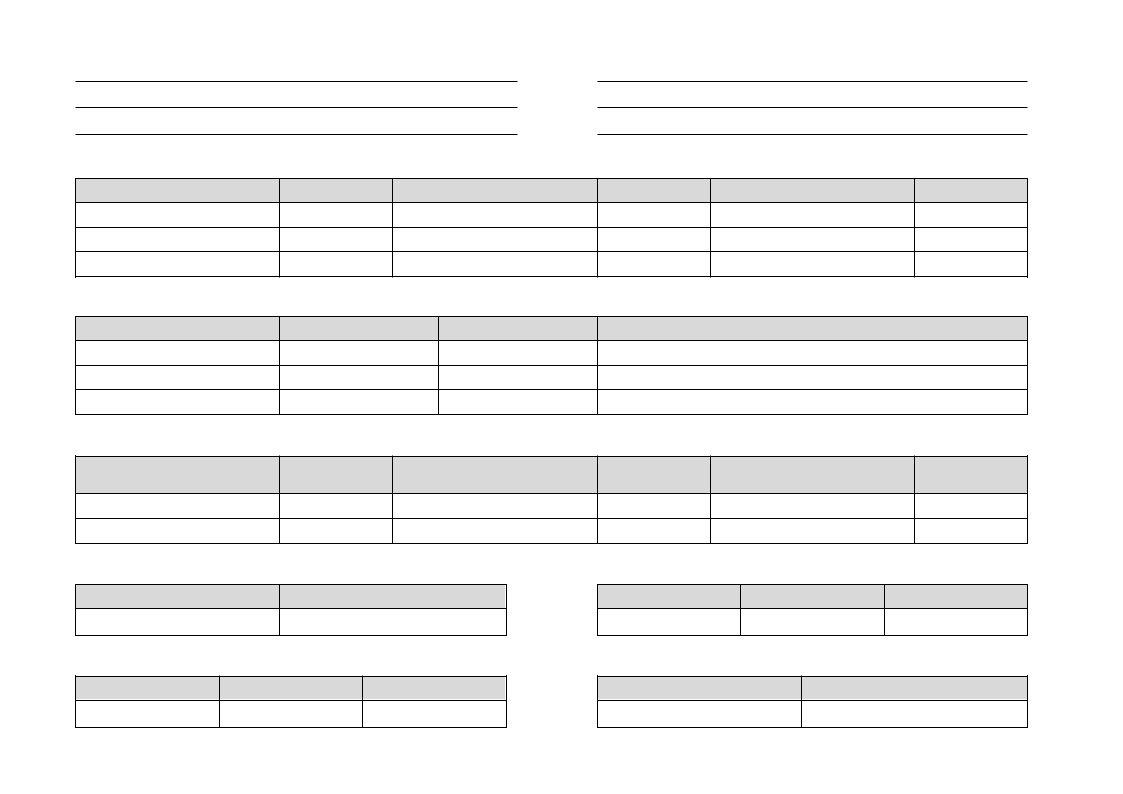
SECTION 1: GENERAL RECORDS
Name
Address
FABBL Membership No.
Tel No. |
Fax No. |
SPRAYER / SEED TREATMENT / GRANULAR DUST OPERATORS CERTIFICATES OF COMPETENCE
Name
Certificate No.
Name
Certificate No.
Name
Certificate No.
CONSULTANTS BASIS / FACTS DETAILS
Name
Basis No.
Facts No.
Address
CONTRACTORS DETAILS
Name
Certificate
details
Name
Certificate
details
Name
Certificate
details
SPRAY OPERATORS NRoSO DETAILS
Name |
NRoSO No. |
CONTRACTORS SPRAYER NSTS DETAILS
Make |
NSTS No. |
Date last test |
SPRAYER NSTS DETAILS
Make |
NSTS No. |
Date last test |
LOCAL BEEKEEPERS LIAISON OFFICER
Name |
Tel No. |
3
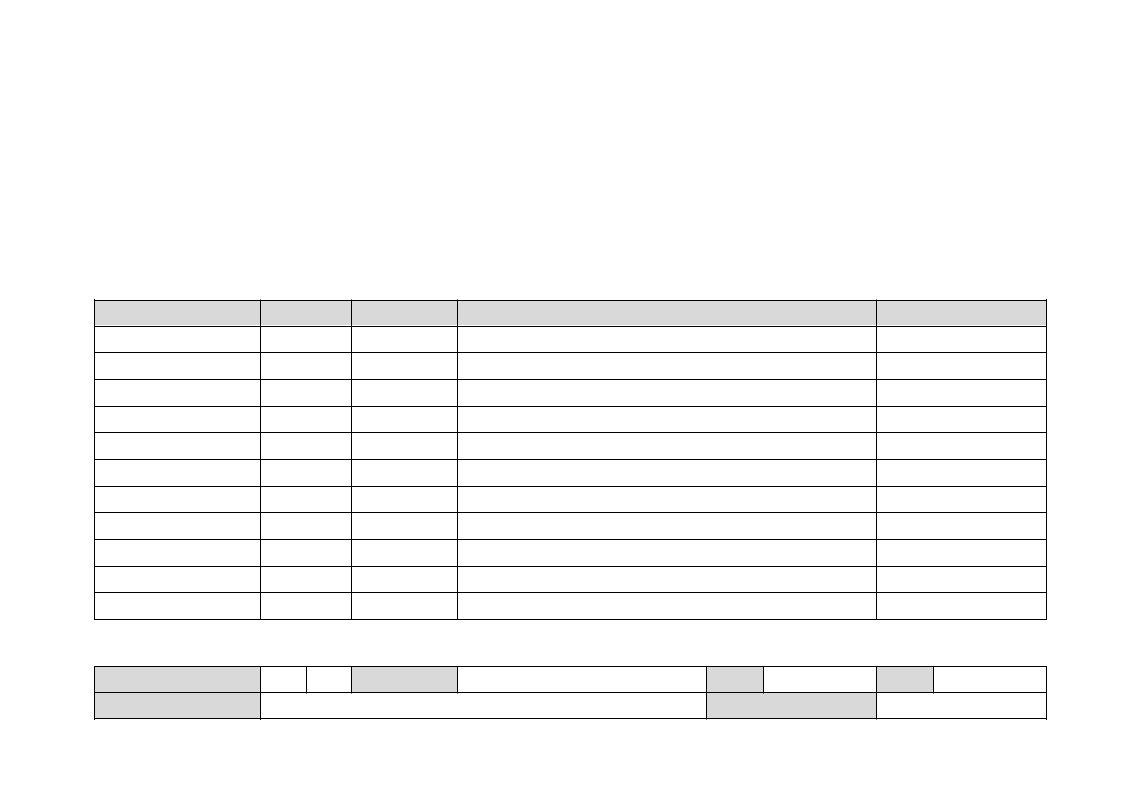
SECTION 2: GRAIN STORAGE
Store Name/No. |
|
|
|
|
|
Bin/Bulk/Bay |
|
|
|
|
|
|
|
|
|
|
|
||||
|
|
|
|
|
|
|
|
|
|
|
Cleaning |
Yes □ |
No □ |
Product used |
|
|
|
Rate |
|
Date |
|
|
|
|
|
|
|
|
|
|
|
|
Insect baiting |
Yes □ |
No □ |
Product used |
|
|
|
Rate |
|
Date |
|
|
|
|
|
|
|
|
|
|
|
|
Insecticide treatment |
Yes □ |
No □ |
Product used |
|
|
|
Rate |
|
Date |
|
|
|
|
|
|
|
|
|
|
|
|
CROP INVENTORY
Date in
FieldÕs ID
Tonnes
Variety/Varieties
Date out
Pesticide treatment Yes □ No □ Product used |
Rate |
Date |
Reason for treatment |
OperatorÕs name |
|
4
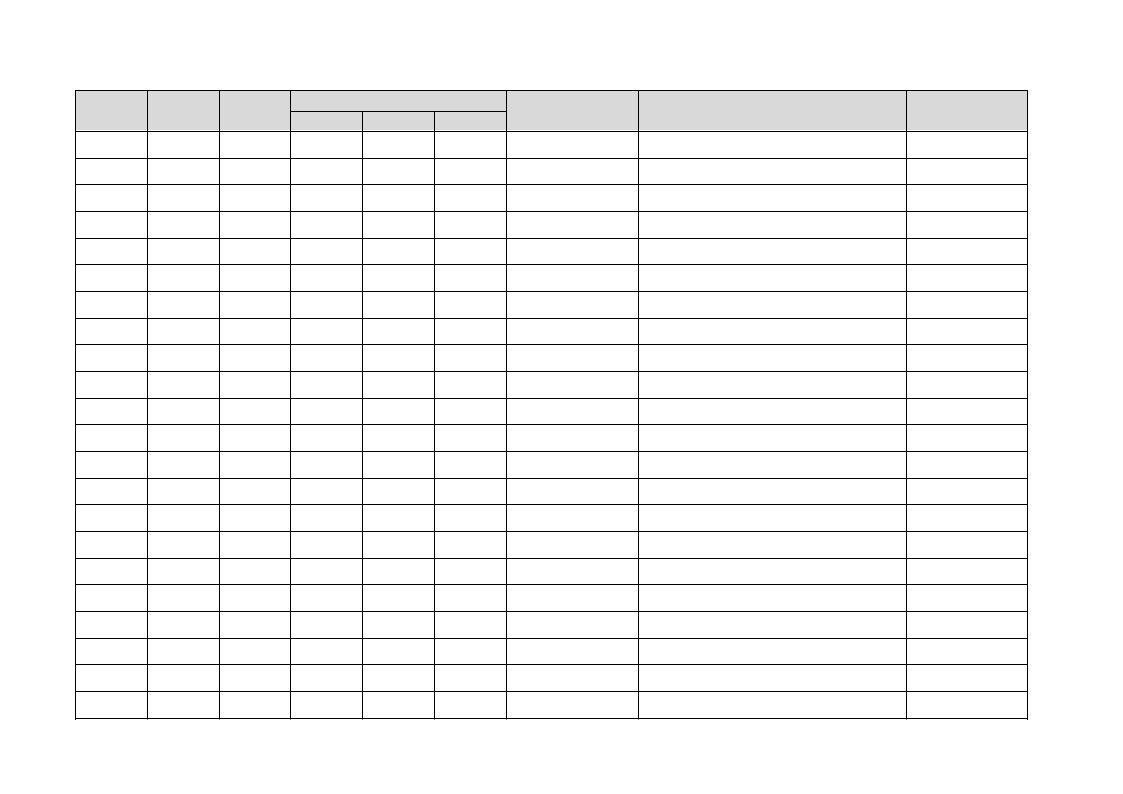
Date
MC%
Temp ¡C
Monitor and Record Activity
Birds |
Rodents Insects |
Inspected by
Comments
Action
5
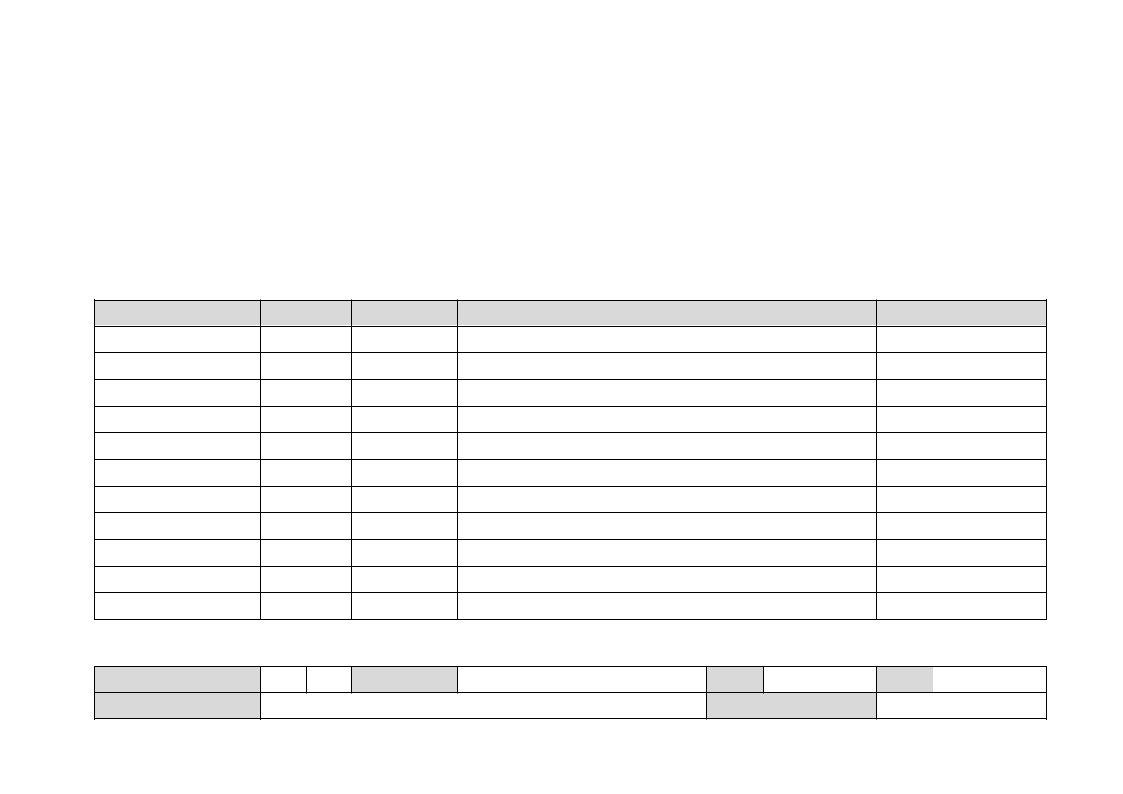
GRAIN STORAGE continued
Store Name/No. |
|
|
|
|
|
Bin/Bulk/Bay |
|
|
|
|
|
|
|
|
|
|
|
||||
|
|
|
|
|
|
|
|
|
|
|
Cleaning |
Yes □ |
No □ |
Product used |
|
|
|
Rate |
|
Date |
|
|
|
|
|
|
|
|
|
|
|
|
Insect baiting |
Yes □ |
No □ |
Product used |
|
|
|
Rate |
|
Date |
|
|
|
|
|
|
|
|
|
|
|
|
Insecticide treatment |
Yes □ |
No □ |
Product used |
|
|
|
Rate |
|
Date |
|
|
|
|
|
|
|
|
|
|
|
|
CROP INVENTORY
Date in
FieldÕs ID
Tonnes
Variety/Varieties
Date out
Pesticide treatment Yes □ No □ Product used |
Rate |
Date |
Reason for treatment |
OperatorÕs name |
|
6

Date
MC%
Temp ¡C
Monitor and Record Activity
Birds |
Rodents Insects |
Inspected by
Comments
Action
7
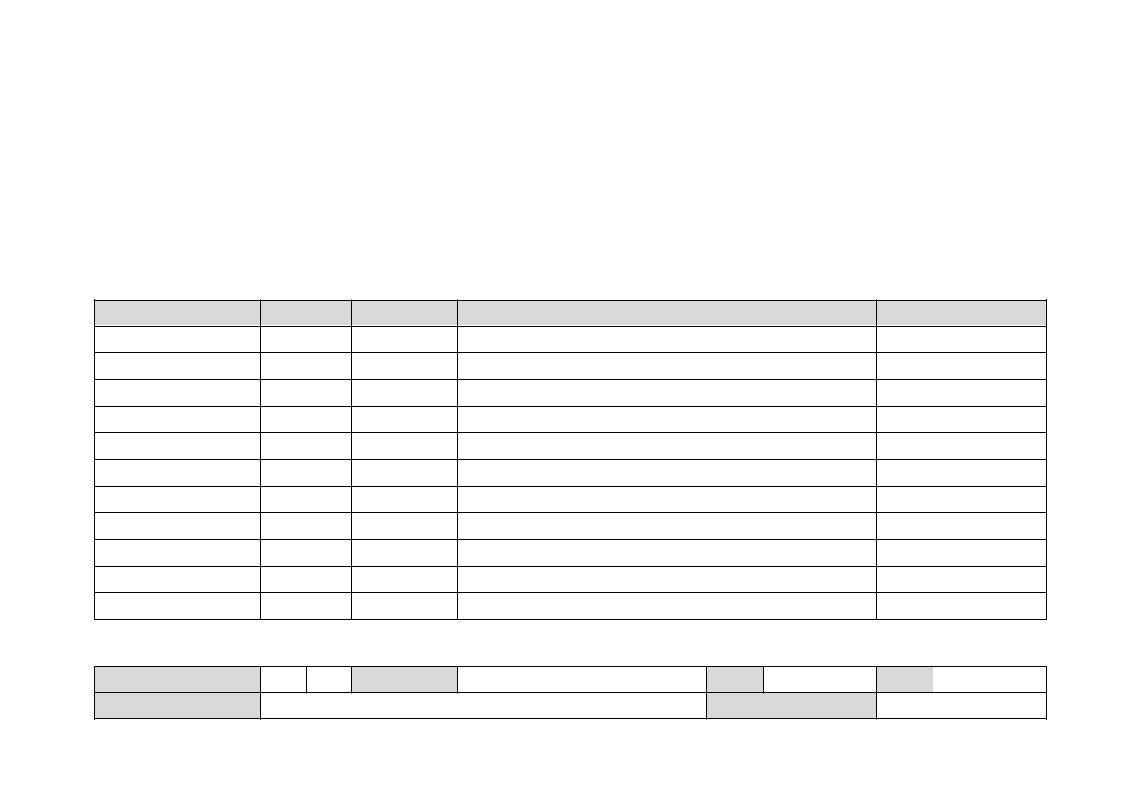
GRAIN STORAGE continued
Store Name/No. |
|
|
|
|
|
Bin/Bulk/Bay |
|
|
|
|
|
|
|
|
|
|
|
||||
|
|
|
|
|
|
|
|
|
|
|
Cleaning |
Yes □ |
No □ |
Product used |
|
|
|
Rate |
|
Date |
|
|
|
|
|
|
|
|
|
|
|
|
Insect baiting |
Yes □ |
No □ |
Product used |
|
|
|
Rate |
|
Date |
|
|
|
|
|
|
|
|
|
|
|
|
Insecticide treatment |
Yes □ |
No □ |
Product used |
|
|
|
Rate |
|
Date |
|
|
|
|
|
|
|
|
|
|
|
|
CROP INVENTORY
Date in
FieldÕs ID
Tonnes
Variety/Varieties
Date out
Pesticide treatment Yes □ No □ Product used |
Rate |
Date |
Reason for treatment |
OperatorÕs name |
|
8
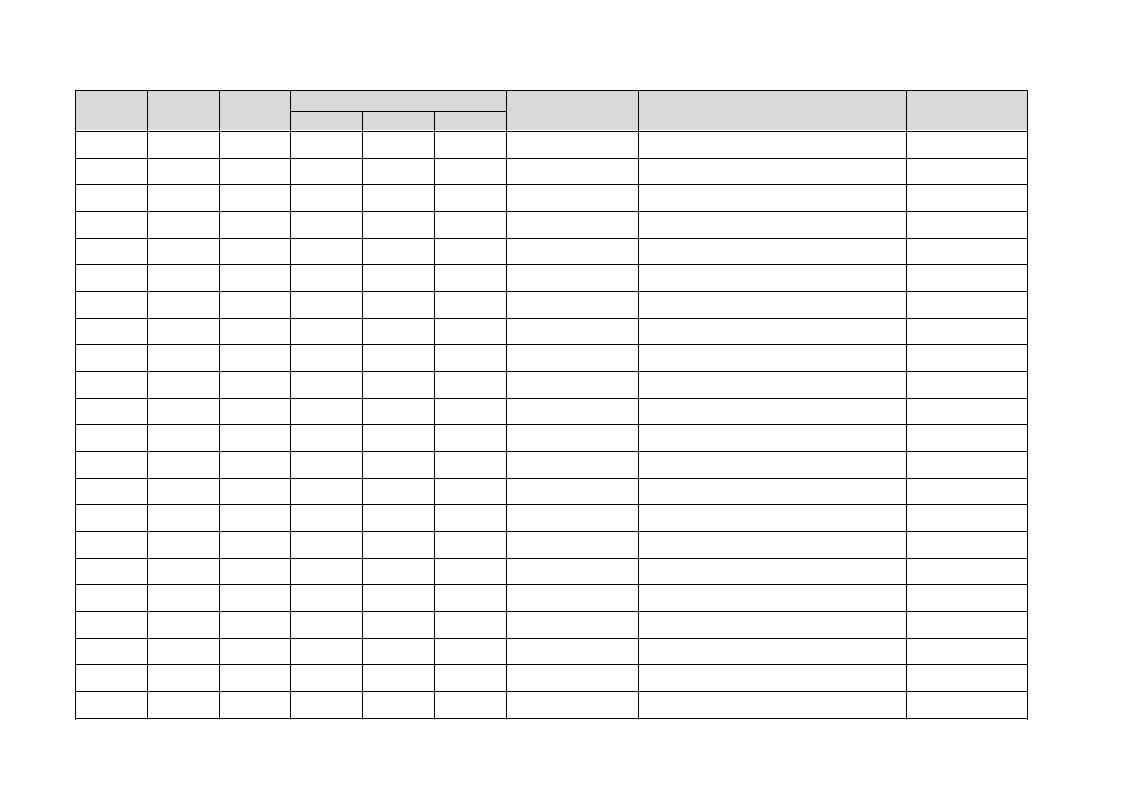
Date
MC%
Temp ¡C
Monitor and Record Activity
Birds |
Rodents Insects |
Inspected by
Comments
Action
9

SECTION 3: CHEMICAL, FERTILIZER AND GRANULAR DUST APPLICATION EQUIPMENT
Equipment type and make
Date
calibrated
Checked by
Comments
Date
maintained
Checked by
Comments
SECTION 4: GRAIN HANDLING EQUIPMENT Combines, Trailers, Grain Driers, Elevators, Cleaners, Loader Buckets, etc.
Equipment type and make
Date cleaned/
sanitised
Date
maintained
Cleaned by
Action/Notes
SECTION 5: MOISTURE METERS/TEMPERATURE PROBES
Equipment type and make
Date
calibrated
Checked by
Action/Notes
10
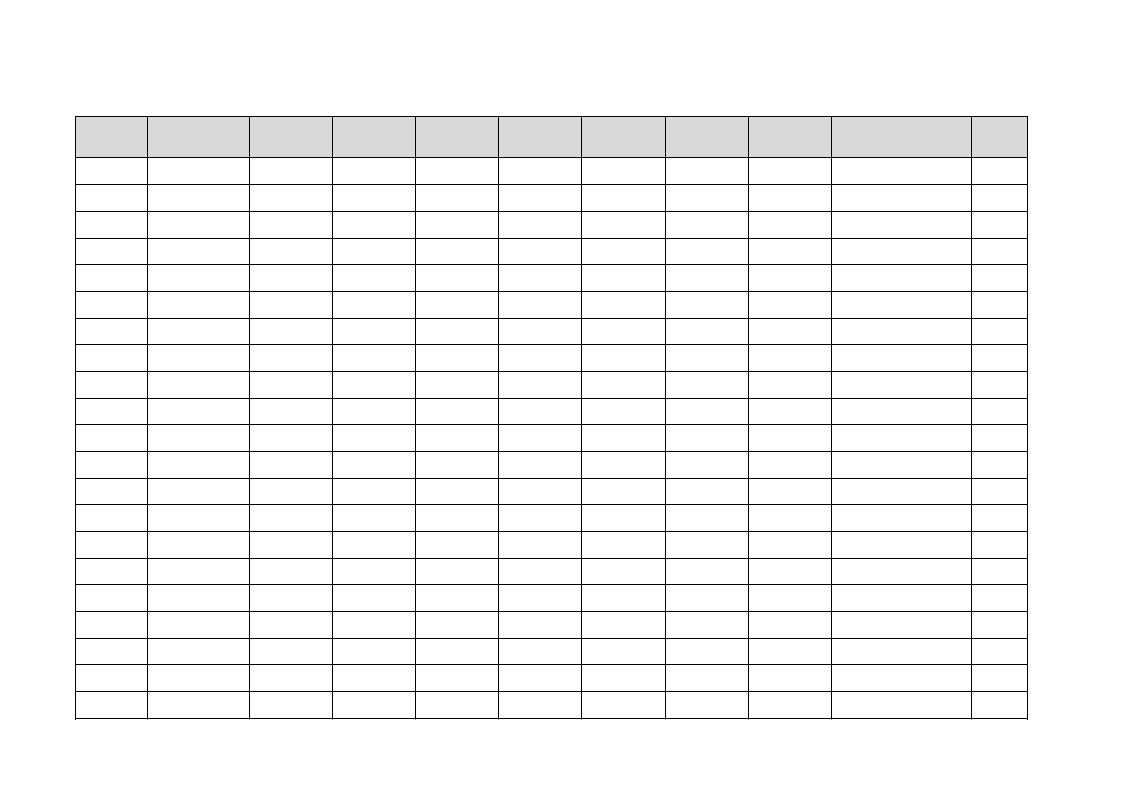
SECTION 6: RODENT CONTROL
Date checked
Bait type
Station 1
location
Station 2
location
Station 3
location
Station 4
location
Station 5
location
Station 6
location
Station 7
location
Observations
Initials
11
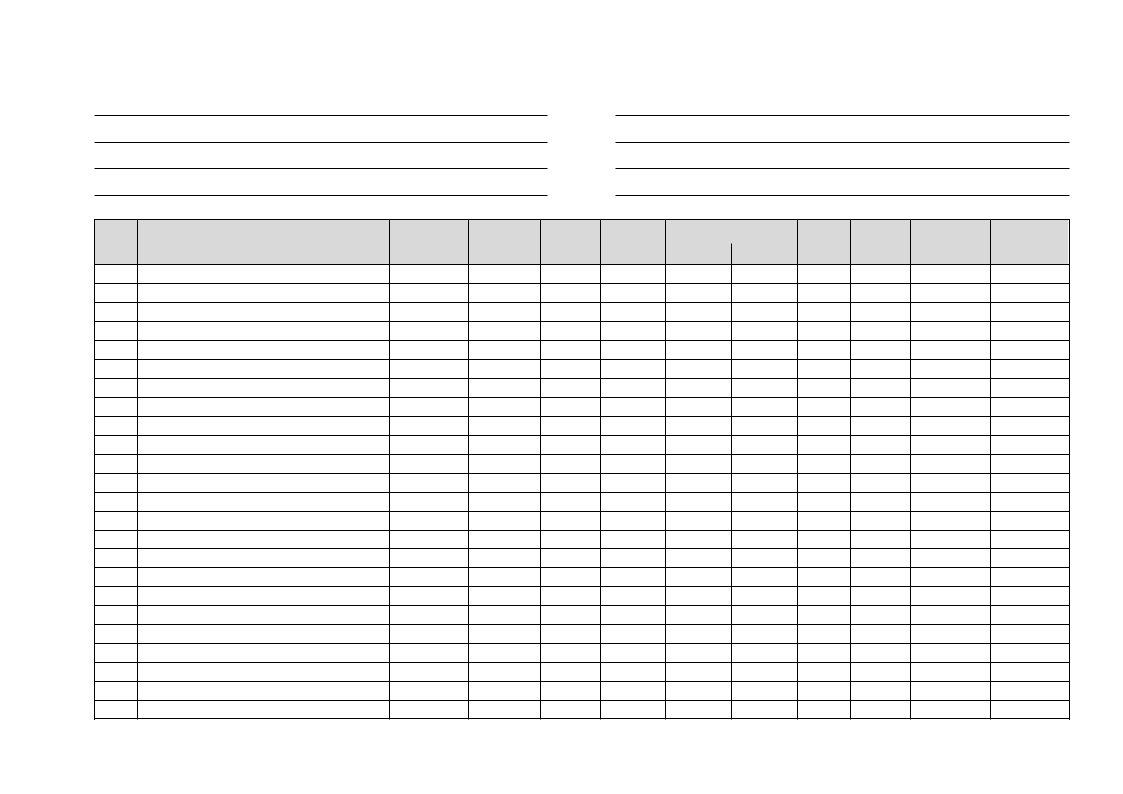
SECTION 7: FIELD RECORD
Field name/number
Soil type
Cultivations
Area
Sowing date
Seed rate
Seed treatment
Date
Reason for treatment
(eg. weed, pest disease, growth regulation)
Product(s)* Dose rate
Water
volume
Product quantity
Spray time
Start End
Total
hours
No. of tanks
Area
sprayed
Crop GS
* including sewage sludge if applicable. Show all products where a tank mix is used.
12
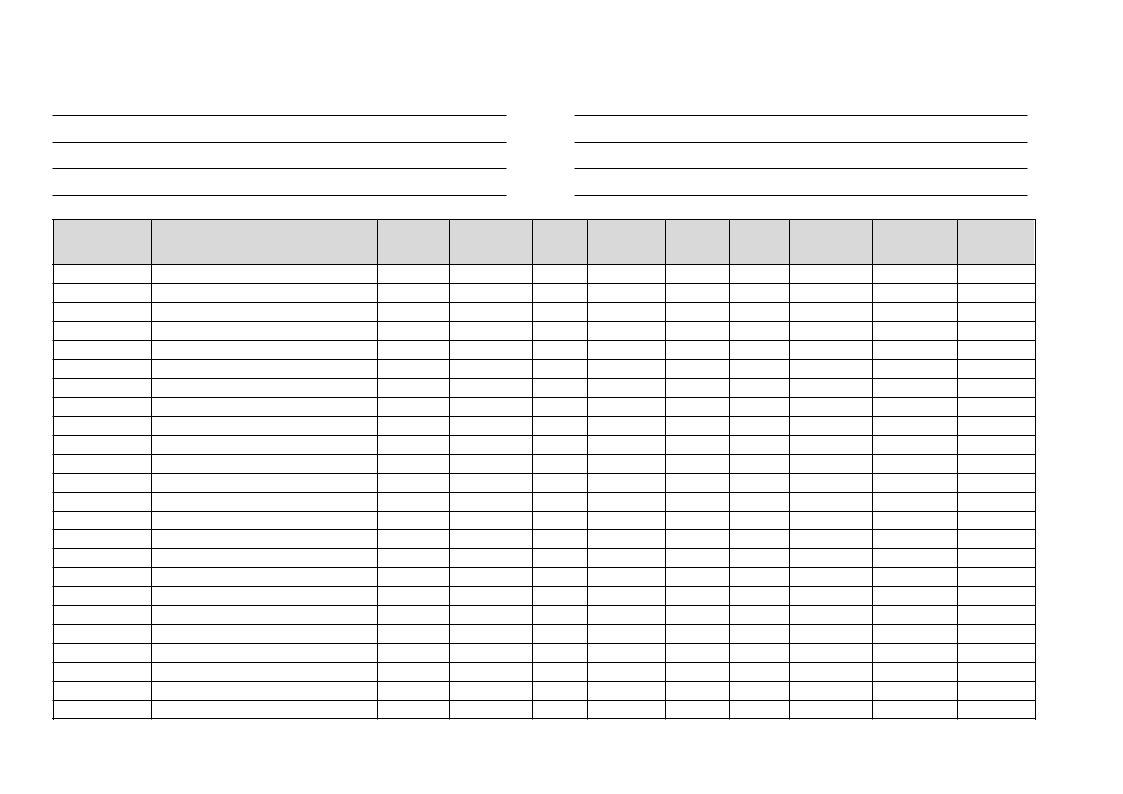
FIELD RECORD continued
Previous crop
Yield
Crop
Variety
Fertilizer use:
Date |
Rate |
N:P:K |
Date |
Rate |
N:P:K |
Date |
Rate |
N:P:K |
Wind
speed direction
Other relevant information
(eg. weather, soil conditions, incidents,
harvest interval,
OperatorÕs
name
COSHH
assessment
Date of |
Completed |
LERAP |
by |
Product
category
**
Product
dose
Low drift
star rating
***
Size of
watercourse
Buffer zone
used (m)
**full; 3/4; 1/2; 1/4; of permitted maximum dose for intended use
***<3m;
13
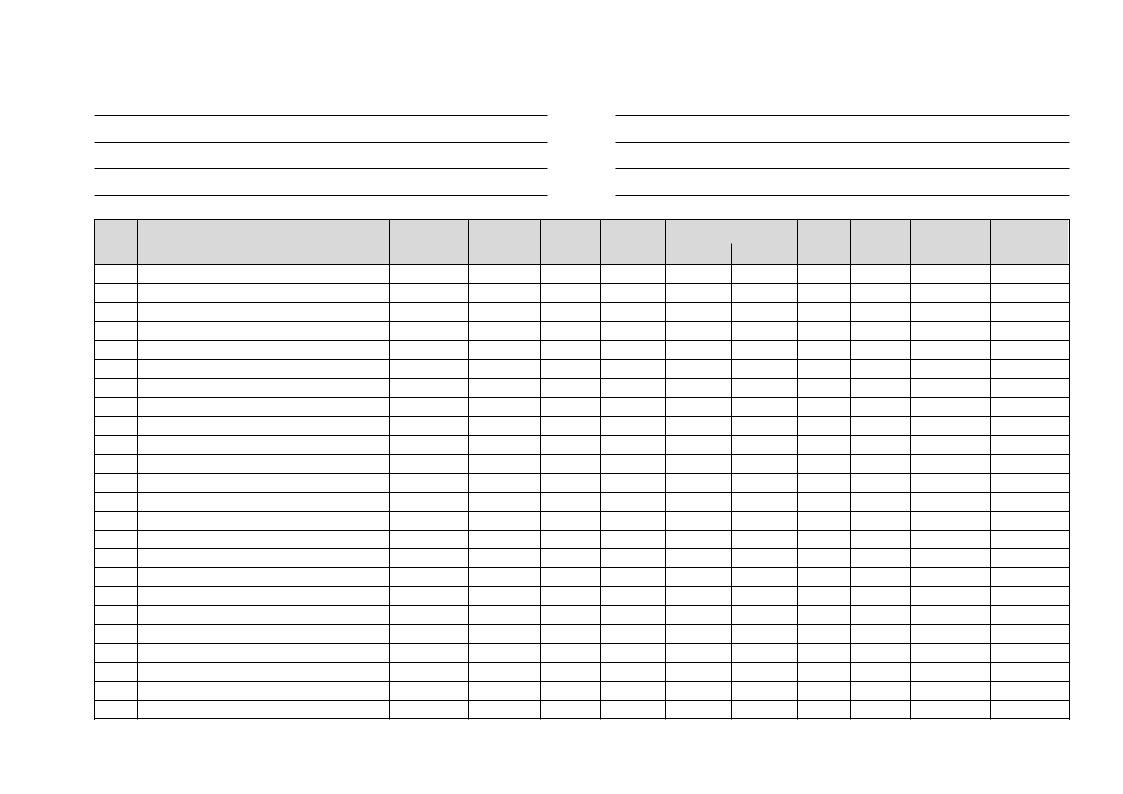
SECTION 7: FIELD RECORD
Field name/number
Soil type
Cultivations
Area
Sowing date
Seed rate
Seed treatment
Date
Reason for treatment
(eg. weed, pest disease, growth regulation)
Product(s)* Dose rate
Water
volume
Product quantity
Spray time
Start End
Total
hours
No. of tanks
Area
sprayed
Crop GS
* including sewage sludge if applicable. Show all products where a tank mix is used.
14

FIELD RECORD continued
Previous crop
Yield
Crop
Variety
Fertilizer use:
Date |
Rate |
N:P:K |
Date |
Rate |
N:P:K |
Date |
Rate |
N:P:K |
Wind
speed direction
Other relevant information
(eg. weather, soil conditions, incidents,
harvest interval,
OperatorÕs
name
COSHH
assessment
Date of |
Completed |
LERAP |
by |
Product
category
**
Product
dose
Low drift
star rating
***
Size of
watercourse
Buffer zone
used (m)
**full; 3/4; 1/2; 1/4; of permitted maximum dose for intended use
***<3m;
15

SECTION 7: FIELD RECORD
Field name/number
Soil type
Cultivations
Area
Sowing date
Seed rate
Seed treatment
Date
Reason for treatment
(eg. weed, pest disease, growth regulation)
Product(s)* Dose rate
Water
volume
Product quantity
Spray time
Start End
Total
hours
No. of tanks
Area
sprayed
Crop GS
* including sewage sludge if applicable. Show all products where a tank mix is used.
16
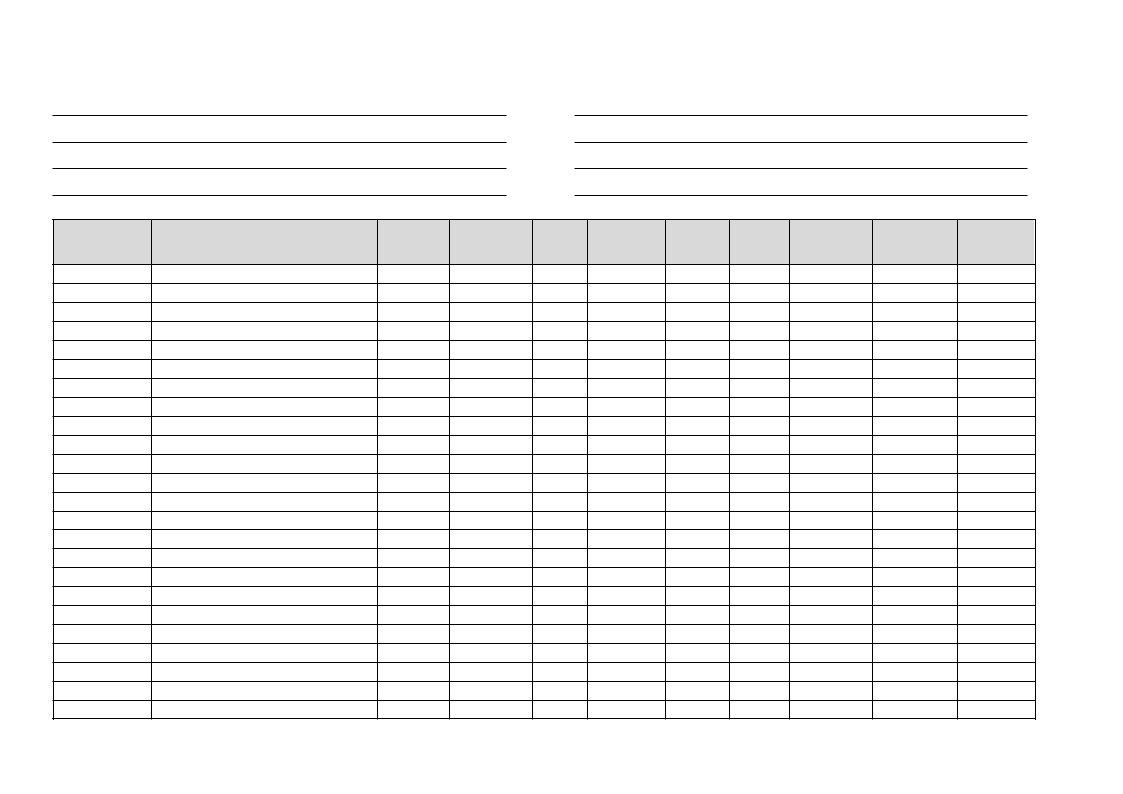
FIELD RECORD continued
Previous crop
Yield
Crop
Variety
Fertilizer use:
Date |
Rate |
N:P:K |
Date |
Rate |
N:P:K |
Date |
Rate |
N:P:K |
Wind
speed direction
Other relevant information
(eg. weather, soil conditions, incidents,
harvest interval,
OperatorÕs
name
COSHH
assessment
Date of |
Completed |
LERAP |
by |
Product
category
**
Product
dose
Low drift
star rating
***
Size of
watercourse
Buffer zone
used (m)
**full; 3/4; 1/2; 1/4; of permitted maximum dose for intended use
***<3m;
17

FIELD RECORD continued
Field name/number
Soil type
Cultivations
Area
Sowing date
Seed rate
Seed treatment
Date
Reason for treatment
(eg. weed, pest disease, growth regulation)
Product(s)* Dose rate
Water
volume
Product quantity
Spray time
Start End
Total
hours
No. of tanks
Area
sprayed
Crop GS
* including sewage sludge if applicable. Show all products where a tank mix is used.
18

FIELD RECORD continued
Previous crop
Yield
Crop
Variety
Fertilizer use:
Date |
Rate |
N:P:K |
Date |
Rate |
N:P:K |
Date |
Rate |
N:P:K |
Wind
speed direction
Other relevant information
(eg. weather, soil conditions, incidents,
harvest interval,
OperatorÕs
name
COSHH
assessment
Date of |
Completed |
LERAP |
by |
Product
category
**
Product
dose
Low drift
star rating
***
Size of
watercourse
Buffer zone
used (m)
**full; 3/4; 1/2; 1/4; of permitted maximum dose for intended use
***<3m;
19
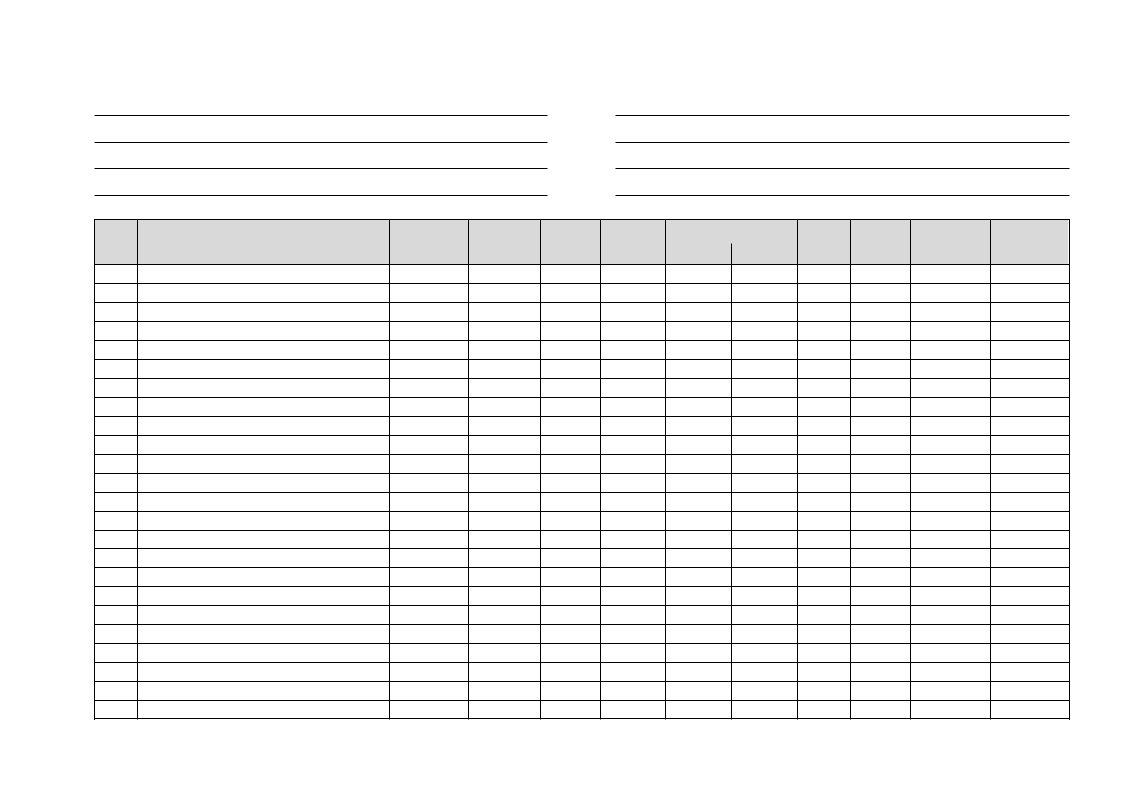
FIELD RECORD continued
Field name/number
Soil type
Cultivations
Area
Sowing date
Seed rate
Seed treatment
Date
Reason for treatment
(eg. weed, pest disease, growth regulation)
Product(s)* Dose rate
Water
volume
Product quantity
Spray time
Start End
Total
hours
No. of tanks
Area
sprayed
Crop GS
* including sewage sludge if applicable. Show all products where a tank mix is used.
20
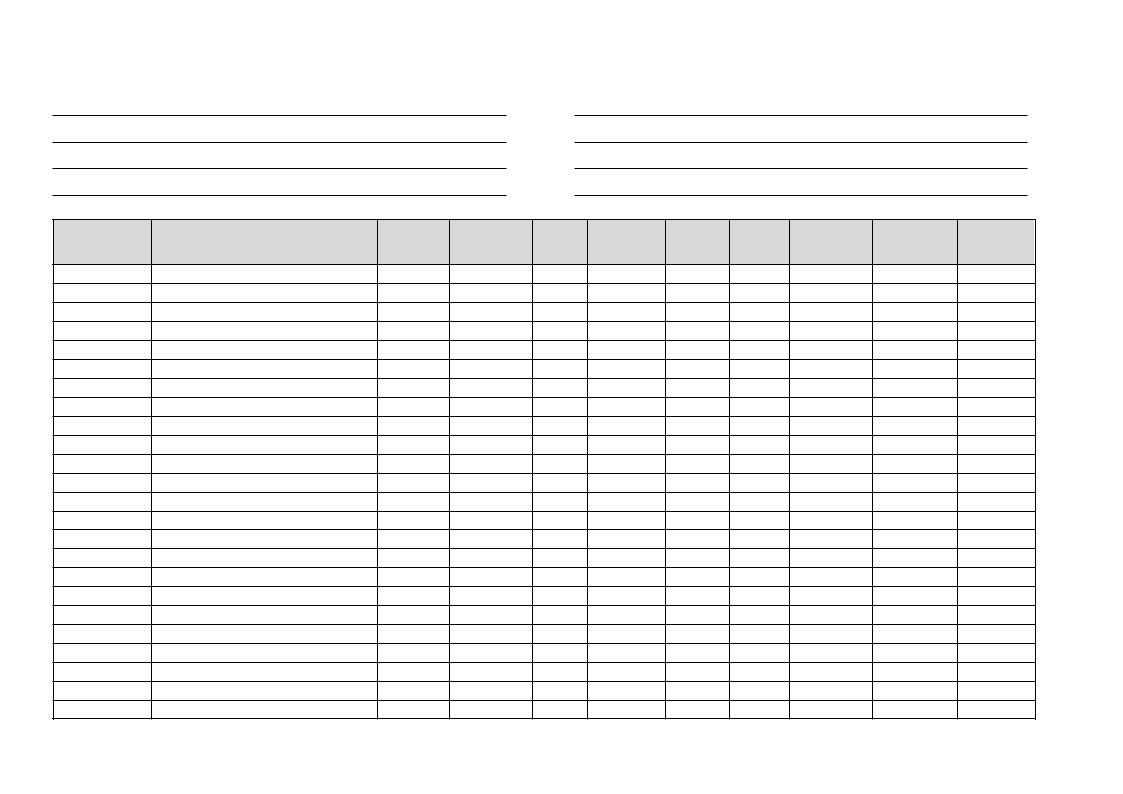
FIELD RECORD continued
Previous crop
Yield
Crop
Variety
Fertilizer use:
Date |
Rate |
N:P:K |
Date |
Rate |
N:P:K |
Date |
Rate |
N:P:K |
Wind
speed direction
Other relevant information
(eg. weather, soil conditions, incidents,
harvest interval,
OperatorÕs
name
COSHH
assessment
Date of |
Completed |
LERAP |
by |
Product
category
**
Product
dose
Low drift
star rating
***
Size of
watercourse
Buffer zone
used (m)
**full; 3/4; 1/2; 1/4; of permitted maximum dose for intended use
***<3m;
21
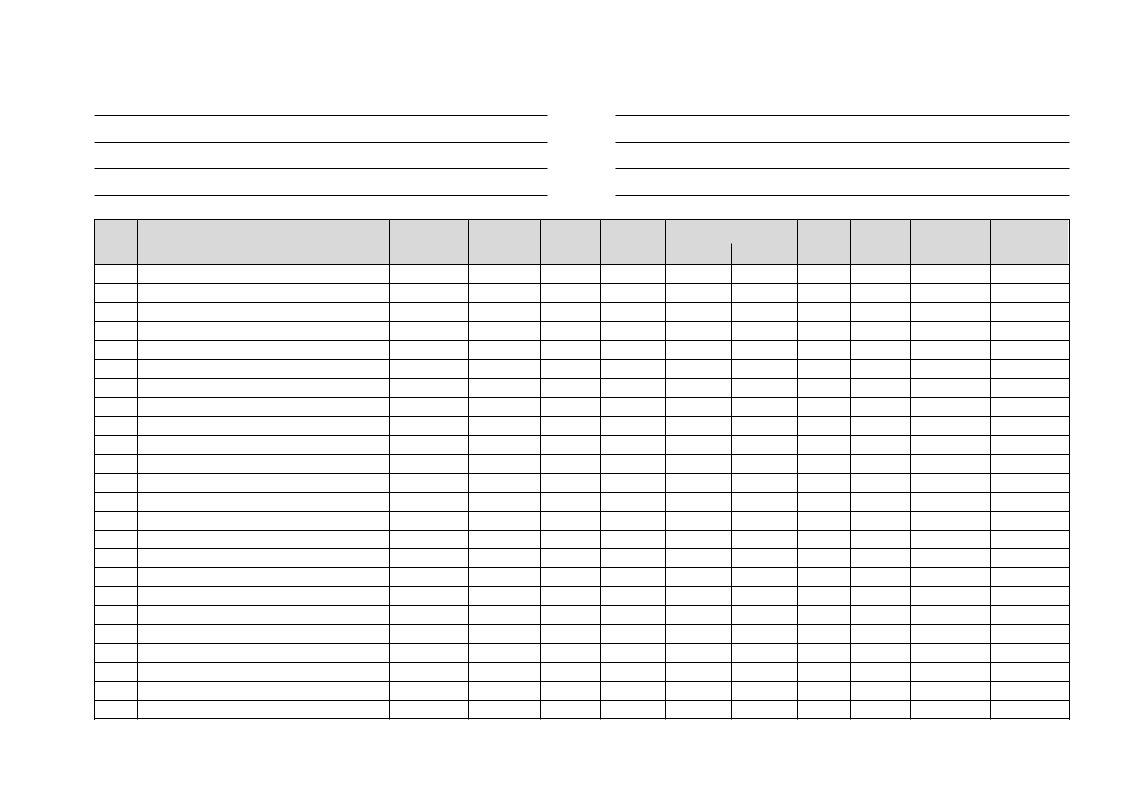
FIELD RECORD continued
Field name/number
Soil type
Cultivations
Area
Sowing date
Seed rate
Seed treatment
Date
Reason for treatment
(eg. weed, pest disease, growth regulation)
Product(s)* Dose rate
Water
volume
Product quantity
Spray time
Start End
Total
hours
No. of tanks
Area
sprayed
Crop GS
* including sewage sludge if applicable. Show all products where a tank mix is used.
22
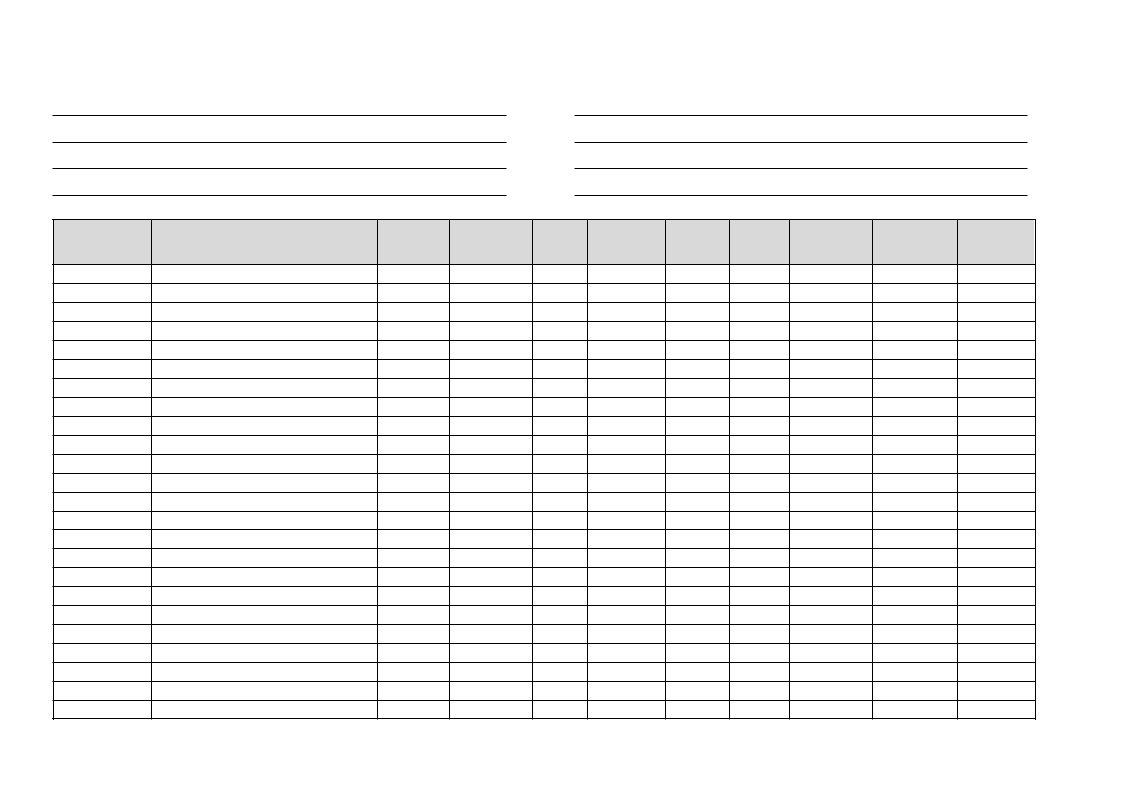
FIELD RECORD continued
Previous crop
Yield
Crop
Variety
Fertiliser use:
Date |
Rate |
N:P:K |
Date |
Rate |
N:P:K |
Date |
Rate |
N:P:K |
Wind
speed direction
Other relevant information
(eg. weather, soil conditions, incidents,
harvest interval,
OperatorÕs
name
COSHH
assessment
Date of |
Completed |
LERAP |
by |
Product
category
**
Product
dose
Low drift
star rating
***
Size of
watercourse
Buffer zone
used (m)
**full; 3/4; 1/2; 1/4; of permitted maximum dose for intended use
***<3m;
23

SECTION 8: EMERGENCY PHONE NUMBERS USE MOBILE /LANDLINE TO PHONE HELP – PHONE LOCATION: __________________________
DO NOT PUT YOURSELF AT RISK – RAISE THE ALARM – INFORM OTHERS OF INCIDENT – CALL IMMEDIATE AND APPROPRIATE HELP
|
|
FIRE OR EMERGENCY |
FIRE OR EMERGENCY |
OTHER IMPORTANT PHONE NUMBERS |
||
|
|
|
||||
DIAL 999 and give the following details: |
Location of Fire Extinguishers |
DOCTOR |
||||
|
|
|
|
|
||
Farm Address |
|
|
Location of Washing Facilities |
LOCAL POLICE |
||
|
|
|
|
|
|
|
|
|
|
|
Location of Gas /Electricity Isolation Points |
ELECTRICITY CO |
|
|
|
|
|
|
|
|
|
|
|
|
|
GAS CO |
|
|
|
|
|
|
||
Postcode |
|
|
Location of Water Supply |
WATER CO |
||
|
|
|
|
|
||
Farm Contact |
|
|
Location Surface and Foul Water Drains /Access Points |
FARM WATCH |
||
|
|
|
|
|
||
Farm Telephone |
|
|
|
EMERGENCY WASTE DISPOSAL COMPANIES |
||
|
|
|
|
|||
Farm Map Reference |
|
POLLUTION RISKS AND SPILLAGES |
|
|||
|
|
|
|
|
||
Sheet No. |
EAST: |
NORTH: |
• Protect any water (surface / ground) soil or air at risk |
|
||
|
|
|
|
• Contain spillages wherever possible BUT maintain safety |
|
|
|
|
|
|
|
||
|
|
|
|
• Call Environment Agency 0800 80 70 60, pass on details. Dial 999 if severe |
|
|
|
|
|
||||
• Describe nature of incident and include any remaining safety hazards |
Absorbant to contain liquids? |
|
||||
• |
Safely move staff, livestock, machinery away from the danger area |
|
|
|||
Divert from drains how? |
LOCAL AUTHORITY / ENVIRONMENTAL HEALTH |
|||||
• |
Inform Fire Brigade of locations of Gas cylinders, Chemicals / Substances |
|||||
|
|
|||||
|
that may be highly flammable, explosive, corrosive, poisonous, oxidising |
|
|
|||
|
Location of spillage kit? |
|
||||
|
agents or give off noxious fumes |
|
|
|||
|
|
|
|
|||
• If appropriate ensure premises are registered under the Dangerous |
Brush Solids and contain in bags |
|
||||
|
Substances (Notification and Marketing of Sites) Regulations and |
|
|
|||
|
Use appropriate PPEs; keep safe |
DO NOT TAKE RISKS! |
||||
|
Radioactive Substances Act |
|
||||
|
|
|
|
|||
|
HAZARDOUS SUBSTANCES & LOCATIONS |
Call relevant authority |
• Signpost your premises from the road |
|||
|
|
|
|
|
|
|
|
|
|
|
ACCIDENTS |
• Ensure staff are trained in safe operations and emergency |
|
|
|
|
|
|
procedures |
|
|
|
|
|
• If severe, DIAL 999 and pass on details as above |
||
|
|
|
|
|
|
|
|
|
|
|
TRAINED FIRST AIDER (name) |
• Ensure machinery and equipment is regularly maintained |
|
|
|
|
|
|
and safeguarded |
|
|
|
|
|
Location of First Aid Box |
||
|
|
|
||||
Manufacturer / Supplier Emergency Contact No’s |
|
• Ensure all emergency standby equipment & environment |
||||
|
|
|
|
|
systems are maintained, with important spares available |
|
|
|
|
|
Nearest Casualty Department is at |
||
|
|
|
|
|
|
|
|
|
|
|
|
• Regularly service and test alarms |
|
|
|
|
|
|
|
|
|
|
|
|
HSE Telephone |
Display copies of this form in all working areas and offices |
|
|
|
|
|
|
|
|
24
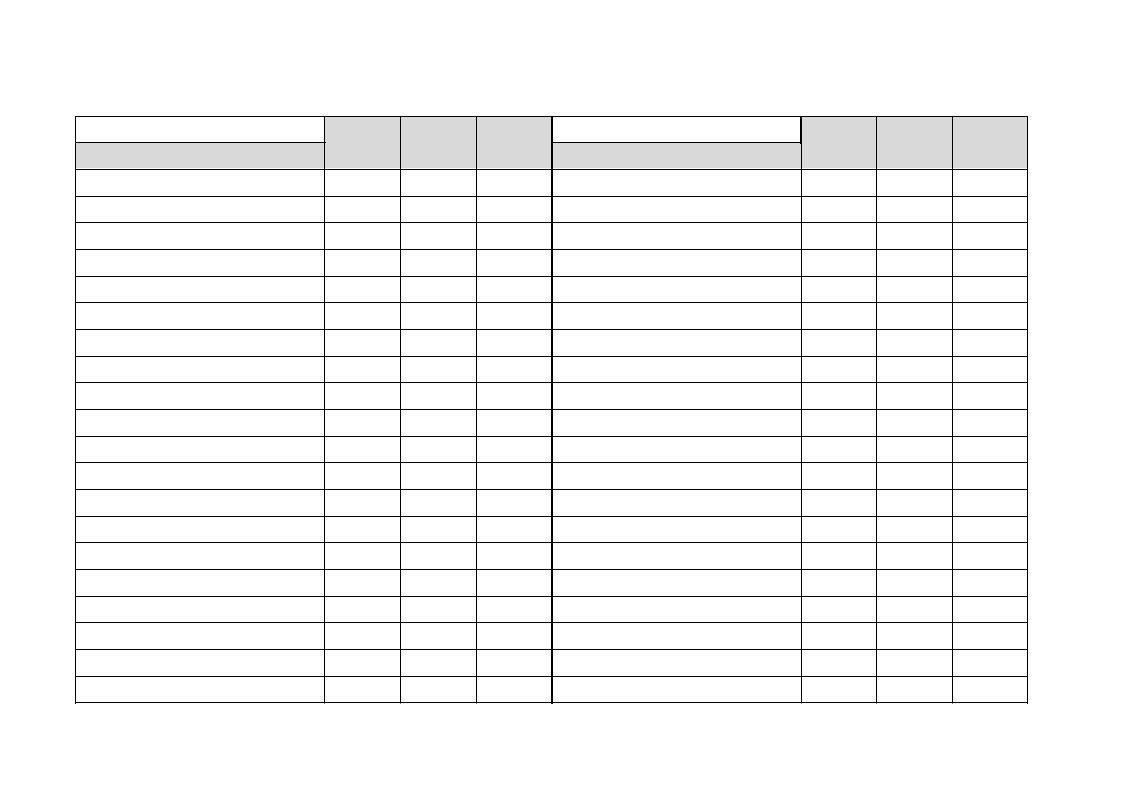
SECTION 9: PESTICIDE INVENTORY
Date
Product
Pack
Current |
Date |
|
|
Quantity Approval Product |
|
Pack
Current
Quantity Approval
25
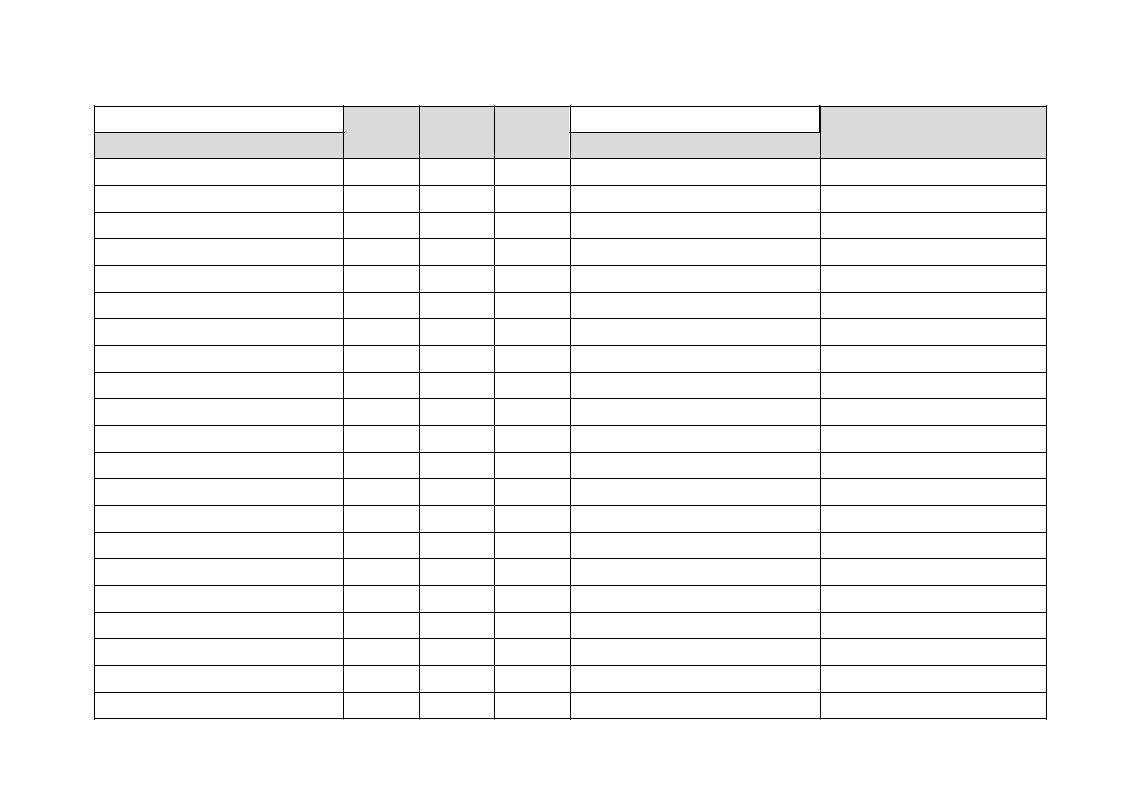
SECTION 9: PESTICIDE INVENTORY continued
Date
Product
|
Current |
Date |
|
|
|
|
|
Pack |
Quantity Approval Product |
Notes |
|
|
|
FERTILIZERS |
|
DISINFECTANT TYPE
WASTE DISPOSAL DETAILS
26
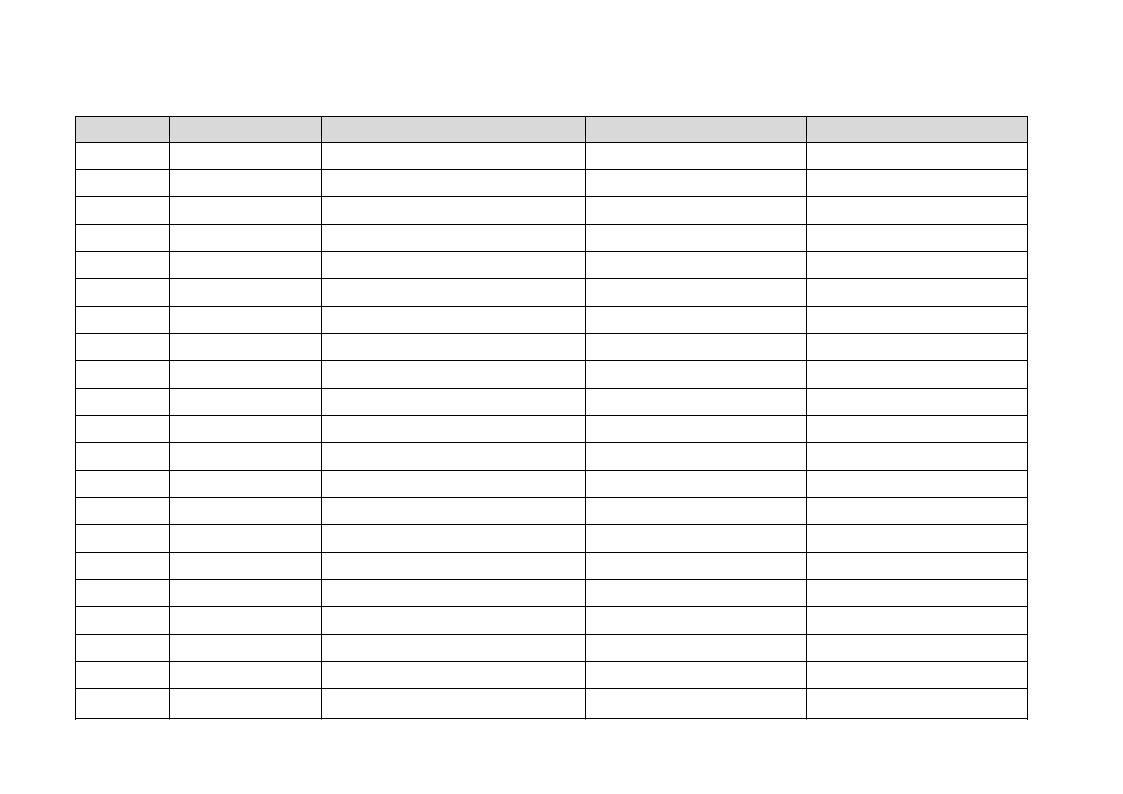
SECTION 10: COMPLAINTS RECORD
Date
Complaints name
Nature of complaint
Action taken
Outcome
27
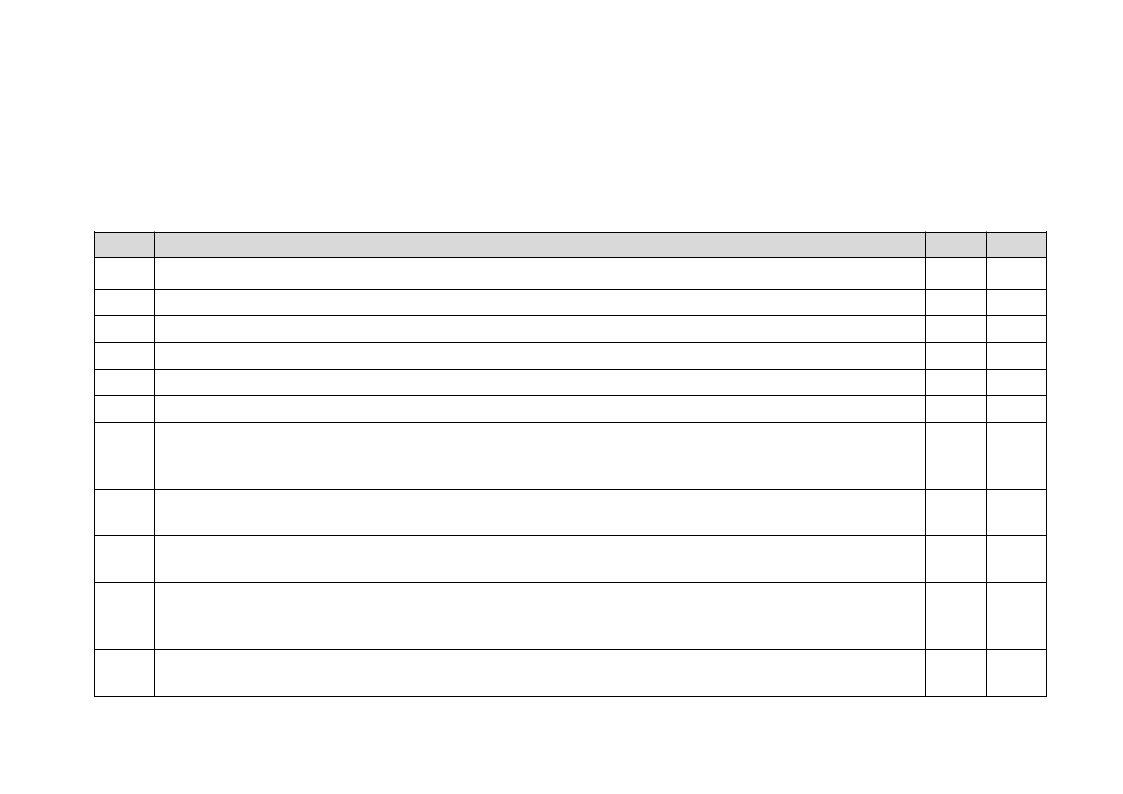
SECTION 11: SECURE STORAGE OF FERTILIZER SELF ASSESSMENT CHECKLIST FOR FARMERS
Mineral [or Manufactured] fertilizer is a valuable product for farmers and growers but is potentially dangerous in the wrong hands.
The storage and security of fertilizer in your possession is therefore of paramount importance and the purpose of this self assessment is to help you to ensure that basic storage and security is maintained.
You must not sell fertilizer unless the purchaser is known by you to be a
YES |
NO |
1.Did you obtain your fertilizer from a Fertilizer Industry Assurance Scheme (FIAS) approved supplier?
2.Is your fertilizer stored away from areas where there is public access?
3.Have you ensured that your fertilizer is not stored or left unattended within sight of a public highway?
4.Do you have a current inventory of your fertilizer stock?
5.Does your inventory detail the type and brand of fertilizer delivered, stored and used?
6.Do you have a record of the manufacturers’ code numbers
7.Is your fertilizer stored in a secure building or compound? Or
Is your fertilizer stored fully sheeted with tamper evident precautions?
8.Do you have a protocol, which is known to all staff, detailing what action must be taken if stored fertilizer is tampered with or unaccountably goes missing (i.e. theft)?
9.How often do you check your fertilizer stock to ensure that any discrepancy is noticed as soon as possible?
(Tick as appropriate) |
Daily □ |
Weekly □ |
Monthly □ |
10.If you store 25 tonnes or more of fertilizer, have you notified your local fire officer and Health and Safety Executive (HSE)? For further advise please refer to SI 1990 No. 304 – The Dangerous Substances (Notification and Marking of Sites) Regulations 1990.
11.If you are storing 150 tonnes or more of ammonium nitrate or ammonium nitrate based fertilisers which contain more than 15.75% nitrogen by weight, have you notified the Health and Safety Executive?
If you have answered ÔNOÕ to any of the above questions record what steps you are taking to make it ÔYESÕ.
28
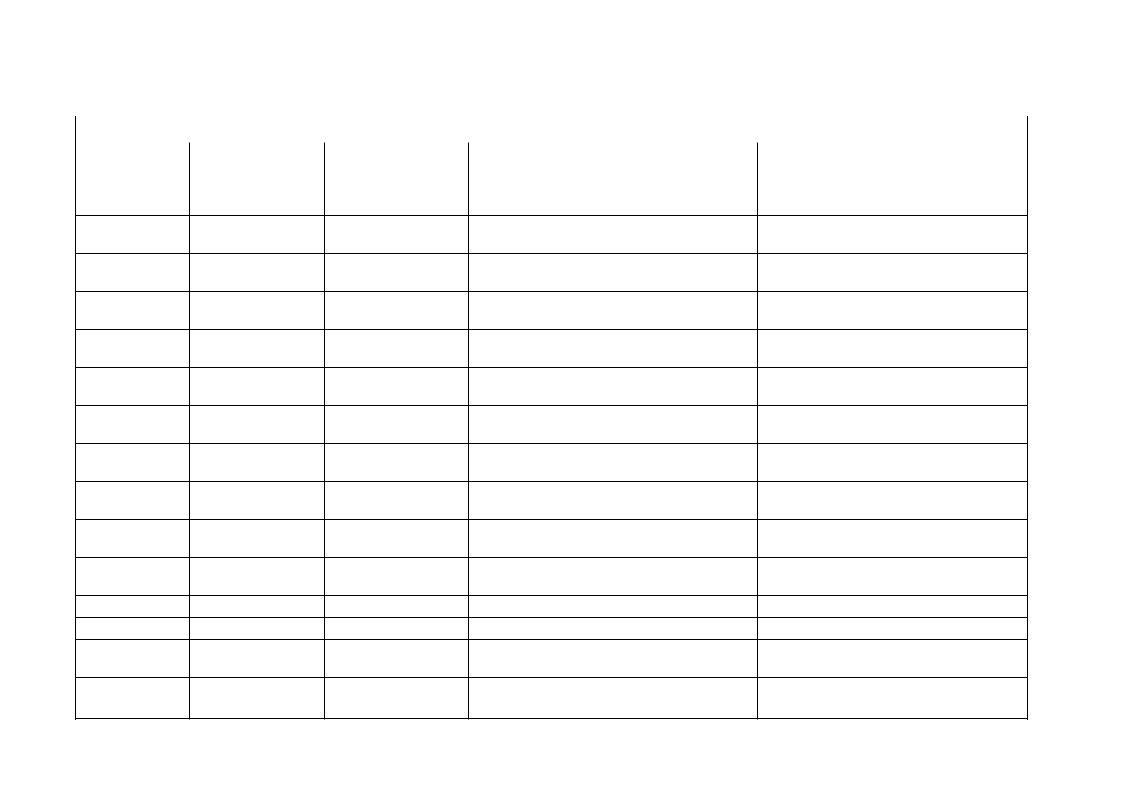
SECTION 12: GRAIN STORE RISK ASSESSMENT |
This assessment can be aided by the guidance in appendix 7, page 41, |
|||
|
|
|
|
of the SAI Global/FABBL Assured Combinable Crops Scheme Standards Book |
|
|
|
|
|
Location |
Hazards |
Risk |
Action |
Recommendations if risk exists |
|
|
|
|
|
Ceiling |
|
|
|
|
Ceiling
Roof
Ceilings/walls
Walls
All areas
All areas
Floor/ loading area
Grain dryers
All areas
All areas
All areas
All areas
All areas
29

SECTION 13: HGCA2011 HGCAMYCOTOXINYCOTOXINRISKRIARISKSESSMAS ESSNTSMENTTOOOL
Risk Assessment for Fusarium mycotoxins Instructions
To assess the risk of fusarium mycotoxins in wheat (for single or multiple fields) enter data into the yellow cells of the risk assessment sheet.
Below the address enter details of the store (Store name) into which wheat from a single or multiple fields has been placed. Then enter individual field names (Field name). Fields can be grouped if grown with the same agronomy.
For each field enter the appropriate risk score for the factors stated.
Cultivation. Crop debris is an important source of fusarium. Complete burial by ploughing reduces risk to the greatest extent while risk is highest with direct drilling. Intensive
Wheat variety. Enter according to HGCA Recommended List rating for fusarium ear blight. If score is not known, assume susceptible and allocate score of 1. Spring wheat varieties should be given a score of 0.
T3 fungicide. Using an appropriate dose rate of a T3 ear fungicide recommended against fusarium and/or mycotoxin production reduces the risk. Current approved fungicides are products containing dimoxystrobin, metconazole, prothioconazole, epoxiconazole, tebuconazole, bromuconazole or thiophanate methyl.
Rainfall at flowering. Wet weather promotes fusarium development. The score is based on total rainfall during flowering
Rainfall
Map of risk areas. The high risk area now includes all parts of Southern Welsh counties, Gloucestershire, Leicestershire, Derbyshire, Nottinghamshire, Warwickshire, Northamptonshire and Yorkshire.
The overall risk score is then calculated automatically.
Below the risk assessment table you can also record the date on which the assessment(s) was completed. You can sign the record as proof of when the assessment was made.
For more information on minimising the risk to fusarium mycotoxins refer to the HGCA guidelines.
Revised May 2011
30

SECTION 13: HGCA2011 HGCAMYCOTOXINMYCOTOXINRISK ASSESSMRISK ESSMENT TOOL
|
|
|
|
|
|
|
|
|
|
|
|
|
|
|
|
|
|
|
|
|
|
|
|
|
|
|
|
|
|
|
|
|
|
|
<<field name>> |
<<field name>> |
<<field name>> |
<<field name>> |
<<field name>> |
<<field name>> |
|
|||
|
|
|
|
|
|
|
|
|
|
|
|
|
|
|
|
Factor |
Details |
Risk |
Score |
Score |
Score |
|
Score |
Score |
Score |
|
|||
|
Region (see map |
High |
4 |
|
|
|
|
|
|
|
|
|
|
|
|
below) |
Moderate |
2 |
|
|
|
|
|
|
|
|
|
|
|
|
|
|
Low |
|
|
|
|
|
|
|
|
|
|
|
|
|
|
Very low |
|
|
|
|
|
|
|
|
|
|
|
|
Previous Crop |
Maize |
6 |
|
|
|
|
|
|
|
|
|
|
|
|
|
|
Other |
0 |
|
|
|
|
|
|
|
|
|
|
|
Cultivation |
Direct drilled |
4 |
|
|
|
|
|
|
|
|
|
|
|
|
|
|
Standard Minimum tillage |
3 |
|
|
|
|
|
|
|
|
|
|
|
|
|
Intensive Minimum tillage |
2 |
|
|
|
|
|
|
|
|
|
|
|
|
|
Plough (soil inversion) |
0 |
|
|
|
|
|
|
|
|
|
|
|
Wheat variety |
RL Resistance rating |
1 |
|
|
|
|
|
|
|
|
|
|
|
|
|
|
RL Resistance rating |
0 |
|
|
|
|
|
|
|
|
|
|
|
|
|
Your |
|
0 |
|
0 |
0 |
0 |
0 |
0 |
|
||
|
T3 fungicide |
Under 50% rate of |
0 |
|
|
|
|
|
|
|
|
|
|
|
|
|
|
recommended product |
|
|
|
|
|
|
|
|
|
|
|
|
|
|
|
|
|
|
|
|
|
|
|
|
||
|
|
|
recommended product |
|
|
|
|
|
|
|
|
|
|
|
|
|
|
75% or above rate of |
|
|
|
|
|
|
|
|
|
|
|
|
|
|
recommended product |
|
|
|
|
|
|
|
|
|
|
|
|
Rainfall at flowering |
More than 80 mm |
9 |
|
|
|
|
|
|
|
|
|
|
|
|
(GS |
6 |
|
|
|
|
|
|
|
|
|
|
||
|
|
|
3 |
|
|
|
|
|
|
|
|
|
|
|
|
|
|
Less than 10mm |
0 |
|
|
|
|
|
|
|
|
|
|
|
Rainfall |
More than 120mm |
12 |
|
|
|
|
|
|
|
|
|
|
|
|
(GS87 to harvest) |
9 |
|
|
|
|
|
|
|
|
|
|
||
|
|
|
6 |
|
|
|
|
|
|
|
|
|
|
|
|
|
|
3 |
|
|
|
|
|
|
|
|
|
|
|
|
|
|
Less than 20 mm |
0 |
|
|
|
|
|
|
|
|
|
|
|
|
|
Your final score |
|
0 |
|
0 |
0 |
0 |
0 |
0 |
|
||
|
|
|
|
|
|
|
|
|
|
|
|
|
|
|
|
|
|
|
|
|
|
|
|
|
|
|
|
|
|
|
|
|
|
|
Date: |
|
|
|
|
|
Signature: |
|
|
|
|
|
|
|
|
|
|
|
|
|
|
|
|
|
|
Final risk scores must be reported on the grain passport, and lots with scores greater than 15 should be tested and the result reported. Additionally, growers should check
31

APPENDIX: How to calculate the LERAP buffer zone applicable to the proposed spray operation
You will have considered the three key elements required to establish what reduction in the buffer zone, if any, is applicable or the proposed
spray operation: the dose to be applied; the
AIdentify which is the appropriate table. This will depend upon the star rating of the sprayer being used.
BFrom the first row of the table, identify which column contains the application rate that you have chosen.
CFrom the first column of the table, identify which row contains the range within which the size of the associated watercourse falls.
The box at which the column and row intersect contains the buffer zone requirement which is applicable to the proposed application.
Make a record of the conclusions reached as a result of the LERAP
It is a legal requirement of the LERAP scheme that a written record be kept of each LERAP conducted. Even if users simply decide instead to apply the standard five metre buffer zone, that decision will still need to be recorded.
All records of LERAPs that have been conducted must be available for inspection for a period of three years following the spray operation.
TANK MIXES
•If a tank mix contains a Category ‘A’ product then the standard 5m (or 1m for a dry ditch) buffer zone always applies – i.e. the worst case scenario applies.
•Where two or more Category ‘B’ products are tank mixed, the qualifying dose (i.e. that used in the LERAP to calculate the required buffer zone) is that of the product which is being applied at the greatest dose relative to the maximum permitted for the use. For example, if product ‘X’ at 3/4 dose is to be tank mixed with product ‘Y’ at 1/4 dose, then only the 3/4 dose is used for the LERAP.
•If only one of the products being mixed has a buffer zone requirement, the dose at which that product is applied will be the qualifying dose rate. For example, if product ‘X’ (Category B) at 1/4 dose is mixed with a 3/4 dose of product ‘Z’ (no buffer zone requirement), then the former (i.e. 1/4) dose is the qualifying dose used in the LERAP.
1: Standard reference sprayer |
|
|
2: LERAP – low drift* sprayer |
|
|
3: LERAP – low drift** sprayer |
|
|
|
4: LERAP – low drift*** sprayer |
|
|||||||||||
|
Dose of application |
|
|
Dose of application |
|
|
Dose of application |
|
|
Dose of application |
||||||||||||
|
Full |
3/4 |
1/2 |
1/4 |
|
|
Full |
3/4 |
1/2 |
1/4 |
|
|
Full |
3/4 |
1/2 |
1/4 |
|
|
Full |
3/4 |
1/2 |
1/4 |
|
Dose |
Dose |
Dose |
Dose |
|
|
Dose |
Dose |
Dose |
Dose |
|
|
Dose |
Dose |
Dose |
Dose |
|
|
Dose |
Dose |
Dose |
Dose |
|
|
|
|
|
|
|
|
|
|
|
|
|
|
|
|
|
|
|
|
|
|
|
Size of watercourse |
|
|
|
|
Size of watercourse |
|
|
|
|
Size of watercourse |
|
|
|
|
|
Size of watercourse |
|
|
|
|
||
|
|
|
|
|
|
|
|
|
|
|
|
|
|
|
|
|
|
|
|
|
|
|
All watercourses |
|
|
|
|
All watercourses |
|
|
|
|
All watercourses |
|
|
|
|
|
All watercourses |
|
|
|
|
||
less than 3 metres |
5m |
4m |
2m |
1m |
less than 3 metres |
4m |
2m |
1m |
1m |
less than 3 metres |
2m |
2m |
1m |
1m |
|
less than 3 metres |
1m |
1m |
1m |
1m |
||
|
|
|
|
|
|
|
|
|
|
|
|
|
|
|
|
|
|
|
|
|
|
|
All watercourses |
|
|
|
|
All watercourses |
|
|
|
|
All watercourses |
|
|
|
|
|
All watercourses |
|
|
|
|
||
3m |
2m |
1m |
1m |
2m |
1m |
1m |
1m |
1m |
1m |
1m |
1m |
|
1m |
1m |
1m |
1m |
||||||
|
|
|
|
|
|
|
|
|
|
|
|
|
|
|
|
|
|
|
|
|
|
|
All watercourses |
|
|
|
|
All watercourses |
|
|
|
|
All watercourses |
|
|
|
|
|
All watercourses |
|
|
|
|
||
greater than 6 metres |
2m |
1m |
1m |
1m |
greater than 6 metres |
1m |
1m |
1m |
1m |
greater than 6 metres |
1m |
1m |
1m |
1m |
|
greater than 6 metres |
1m |
1m |
1m |
1m |
||
|
|
|
|
|
|
|
|
|
|
|
|
|
|
|
|
|
|
|
|
|
|
|
Dry ditch |
1m |
1m |
1m |
1m |
Dry ditch |
1m |
1m |
1m |
1m |
Dry ditch |
1m |
1m |
1m |
1m |
|
Dry ditch |
1m |
1m |
1m |
1m |
||
|
|
|
|
|
|
|
|
|
|
|
|
|
|
|
|
|
|
|
|
|
|
|
N.B. Dose of application – where the actual dose being applied falls between those given above, the dose should be rounded up to the nearest stated dose category.
32
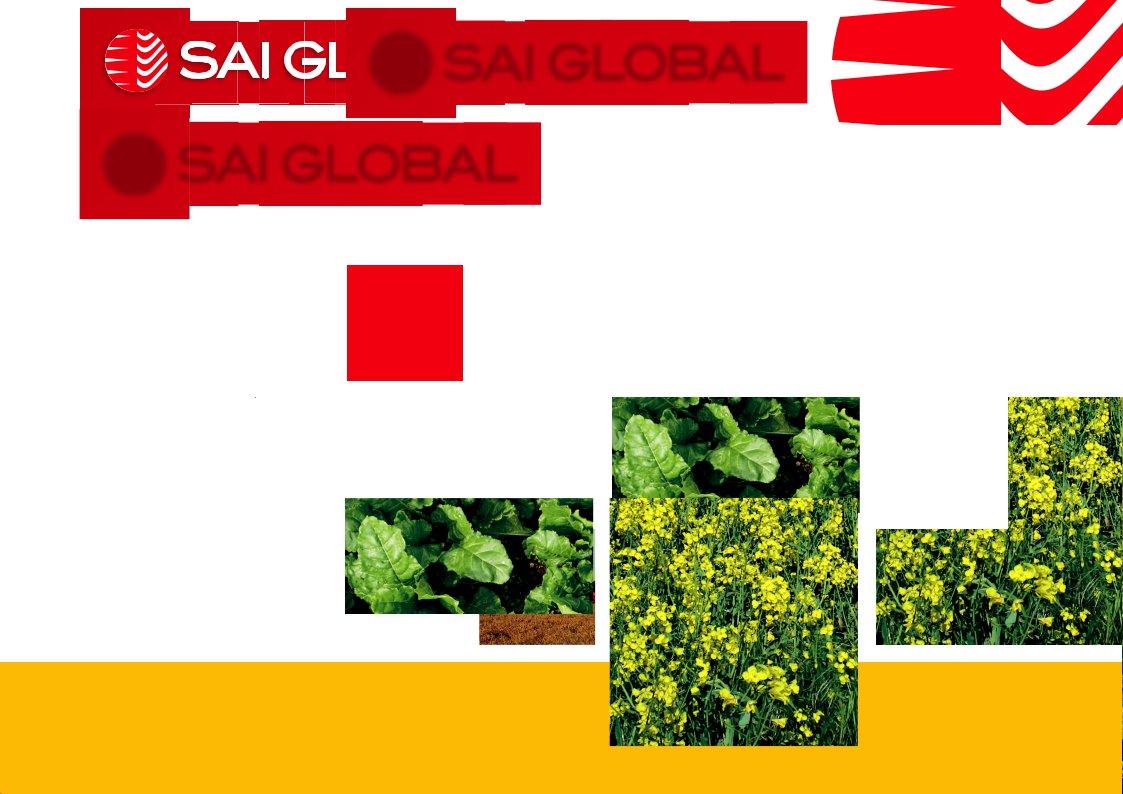
SAI Global Assurance Services Ltd
PO Box 165, Winterhill House, Milton Keynes, MK6 1PB
Tel: 01908 249973 Fax: 01908 249965 Email: agrifood@saiglobal.com www.saiglobal.com
October 08 Ref No FABBL/CCv3